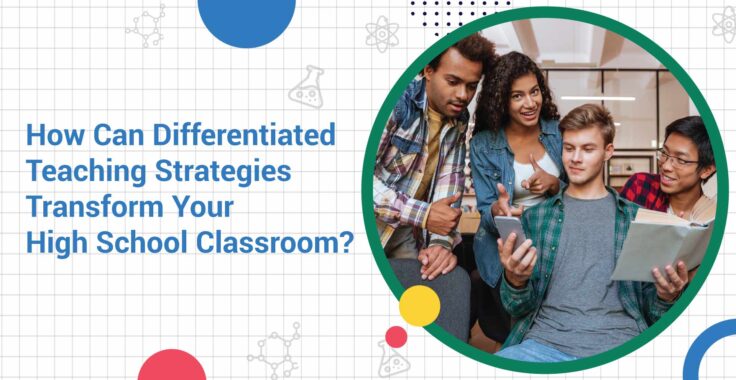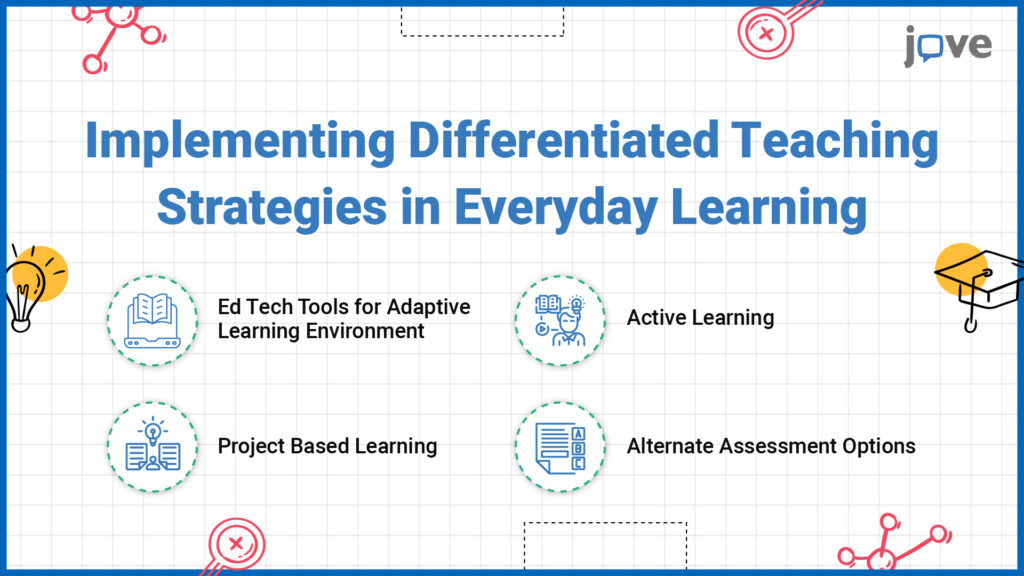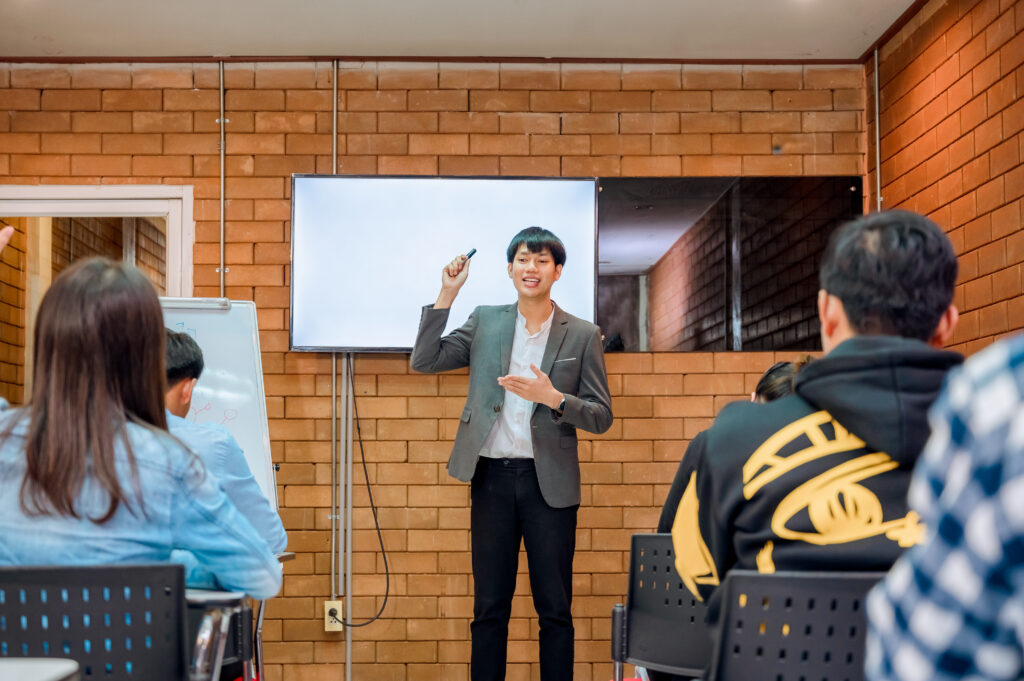
How Can Differentiated Teaching Strategies Transform Your High School Classroom?
Students enter classrooms with diverse experiences, different learning paces, and unique learning styles, which can often feel overwhelming for both sides of the classroom—students and educators alike. This feeling stems from the pressure to keep up with standard teaching methods that may not align with the student’s learning processes.
For many high school students, the pace may be either too slow or too fast, and the instruction style may not correspond to their unique cognitive or emotional needs, which could make them feel isolated from the curriculum, causing them distress.
This diversity reflects the rich tapestry of their backgrounds and brings a unique challenge to educators: How can differentiated teaching strategies be tailored to effectively meet varied needs?
What are Differentiated Teaching Strategies?
Differentiated learning, or simply differentiation in education, is a framework for effective teaching that opens up new avenues for students to understand concepts better.
According to Carol Ann Tomlinson, this helps in “ensuring that what a student learns, how he or she learns it, and how the student demonstrates what he or she has learned is a match for that student’s readiness level, interests, and preferred mode of learning.”
In this blog, we present differentiated teaching strategies that empower teachers to address these challenges, ensuring every student can succeed in their learning environment.

Overcoming Barriers with Differentiated Learning Strategies
Learning barriers are the social, personal, or cognitive obstacles that prevent students from utilizing their full potential and achieving their learning goals easily. In the past few years, teaching and learning styles have evolved to tackle these learning barriers.
This is best done through major advancements in education technology, which has brought about a whirlwind of change in the learning sphere. Embracing differentiated teaching strategies that cater to diverse learning styles has revolutionized the EdTech industry.
A prime example of this initiative is JoVE, a STEM video platform that has carved out a unique niche in education by providing accessible, engaging, curriculum-aligned video resources tailored specifically for high school students. The integration of specialized resources demonstrates how technology can not just support but enhance the educational experience for students of all backgrounds.
Personalizing Pace and Style in the Classroom
Almost every high school student has a preferred learning style and their own pace of learning. This leads us to ask the question: How can you, as an educator, implement differentiated teaching strategies so that each student learns at their own pace without falling behind in the curriculum material?
78% of academic leaders rate online education as effective as or better than traditional classrooms, highlighting EdTech’s role in supporting diverse learning strategies. JoVE facilitates this by allowing educators to customize video lessons that cater to their students’ needs while easily monitoring their progress. Its integration with any LMS ensures educators can adapt or use existing content to enhance their curriculum effectively.
Addressing Language Diversity
As of 2021, 21.3% of students spoke a language other than English at home. This directly correlates with the fact that students nationwide might be struggling to understand the curriculum completely.
By eliminating language barriers and incorporating diverse learning strategies, students can better grasp and retain complex scientific concepts. As diversity gains priority, learning methods have evolved to make content universally accessible. Over time, content providers have learned to cater to everyone’s language needs—take, for instance, JoVE’s ability to provide over 13+ languages to support students.
Implementing Differentiated Teaching Strategies in Everyday Learning
Classroom instructions are the foundation of learning. Teachers have to ensure that every student’s learning style is catered to in the classroom. This can often be tedious, especially if you are still trying to determine which differentiated learning strategy will suit your high school students best. However, here are some ways you can integrate diverse learning strategies to help meet the needs of learners in your classroom:
EdTech Tools for Adaptive Learning Environment
Active Learning
Project-based Learning
Alternate Assessment Options

Let’s explore these diverse methods so you can seamlessly incorporate them into your classroom.
EdTech Tools for Adaptive Learning Environment

EdTech tools are designed with diverse learners in mind. Students often have an inherent phobia of complex scientific topics. Differentiated teaching strategies, such as visual learning, can simplify such concepts.
JoVE, for instance, offers 3,500+ STEM videos backed by experts and Ph.D.s in the same sphere for accuracy. Students can consume this knowledge knowing that the information provided is exactly according to their curriculum and is NGSS, AP, and US State aligned.
Integrating EdTech to Support Diverse Learning Strategies
Interactive educational platforms can revolutionize learning environments. It allows educators to construct dynamic presentations that include videos, quizzes, polls, and open-ended questions, which are integral for implementing differentiated teaching strategies. By integrating versatile resources like JoVE, educators can offer a more personalized and effective learning experience that acknowledges and addresses the varied ways students absorb and process information.
Incorporating Assistive Technologies for Inclusive Learning
Assistive technology tools are tailored for students with specific learning needs. Text-to-speech software helps students with reading challenges by converting text to speech, while speech recognition allows those with writing difficulties to dictate their thoughts. These technologies are essential for creating an equitable educational environment, supporting differentiated teaching strategies, and enabling full student engagement.
Implementing Active Learning in Your Classroom

The evolution of education emphasizes diverse strategies like active learning, which incorporates real-world concepts and case studies for deeper understanding. In his research, Mr Malcolm Knowles, an expert in adult education, mentions that students are more inclined to learn subject material when they are given an opportunity to solve problems and provide resolutions as part of their learning process.
This further solidifies the idea that differentiated teaching strategies, like active recall, can help students overcome curriculum difficulties. Providing students with case studies on lesson topics bridges the gap between the unknown and the known, assisting high schoolers to comprehend topics.
Real-World Relevance
Imagine helping students analyze real-world data on climate change to understand its causes and effects! Real-world relevance helps combine concepts taught in the classroom with real-life settings that students might encounter daily. This diverse learning strategy helps bridge the gap between theory and practice, making learning more engaging for students.
Case-Based Learning
Case-based learning is a differentiated learning strategy that uses real-world scenarios to engage students in critical thinking, problem-solving, and decision-making. Students are presented with a case study that outlines a specific problem and are tasked with analyzing the information, applying relevant knowledge, and formulating solutions or recommendations.
For example, a historical case study of a scientific discovery allows students to analyze the process of scientific inquiry and innovation.
Enhancing Engagement through Project-Based Learning

Project-based learning is another diverse learning strategy – a simple yet impactful way to ensure your students’ full involvement in the curriculum. An easy way to make classes interactive is to provide them with illustrations of specific scientific concepts along with real-world examples of the experiments they are only learning about in theory. JoVE’s lab videos use differentiated teaching strategies to comprehensively cover experiments, safety protocols, and scientific principles, effectively creating a virtual lab experience.
Beyond Traditional Assessments: Differentiated Teaching Strategies for Evaluation
Traditional evaluation methods often resemble a rat race among students, focusing primarily on assessing a student’s ability to retain information under pressure. This approach contrasts sharply with alternative assessment forms, which aim to measure true understanding rather than just rote memorization.
As education evolves, so does the methodology of assessment. With the rise of differentiated learning strategies, alternate assessments have become increasingly popular. These methods shift the focus from mere recollection to a more holistic understanding of a student’s grasp of the material, identifying areas of strength and those needing improvement.
Implementing Differentiated Assessments in Modern Learning Environments
Educators can enhance assessments by using interactive, customized quizzes to match individual learning styles. JoVE’s tools allow for immediate analysis of quiz data, providing real-time performance insights and instant feedback, which is essential for adapting teaching to meet each student’s needs.
Final Thoughts
Each school year brings various challenges that may affect students’ learning styles. As an educator, adapting to this learning curve and implementing differentiated teaching strategies is vital to ensure students learn to their full potential.
Differentiating instruction through differentiated teaching strategies equips you to do that without drawing up separate lesson plans for each student. This also enables educators to use tools like JoVE to help them teach and assess students’ learning more effectively. So, try these methods in your classroom and encourage your students to learn in their own way.
Why wait? Sign up for JoVE today to access thousands of science videos, lab simulations, and more. Enhance your teaching and give your students the dynamic learning experiences they need to thrive in today’s world.
Start now for free and access 20 JoVE science videos to see how they can transform your classroom!